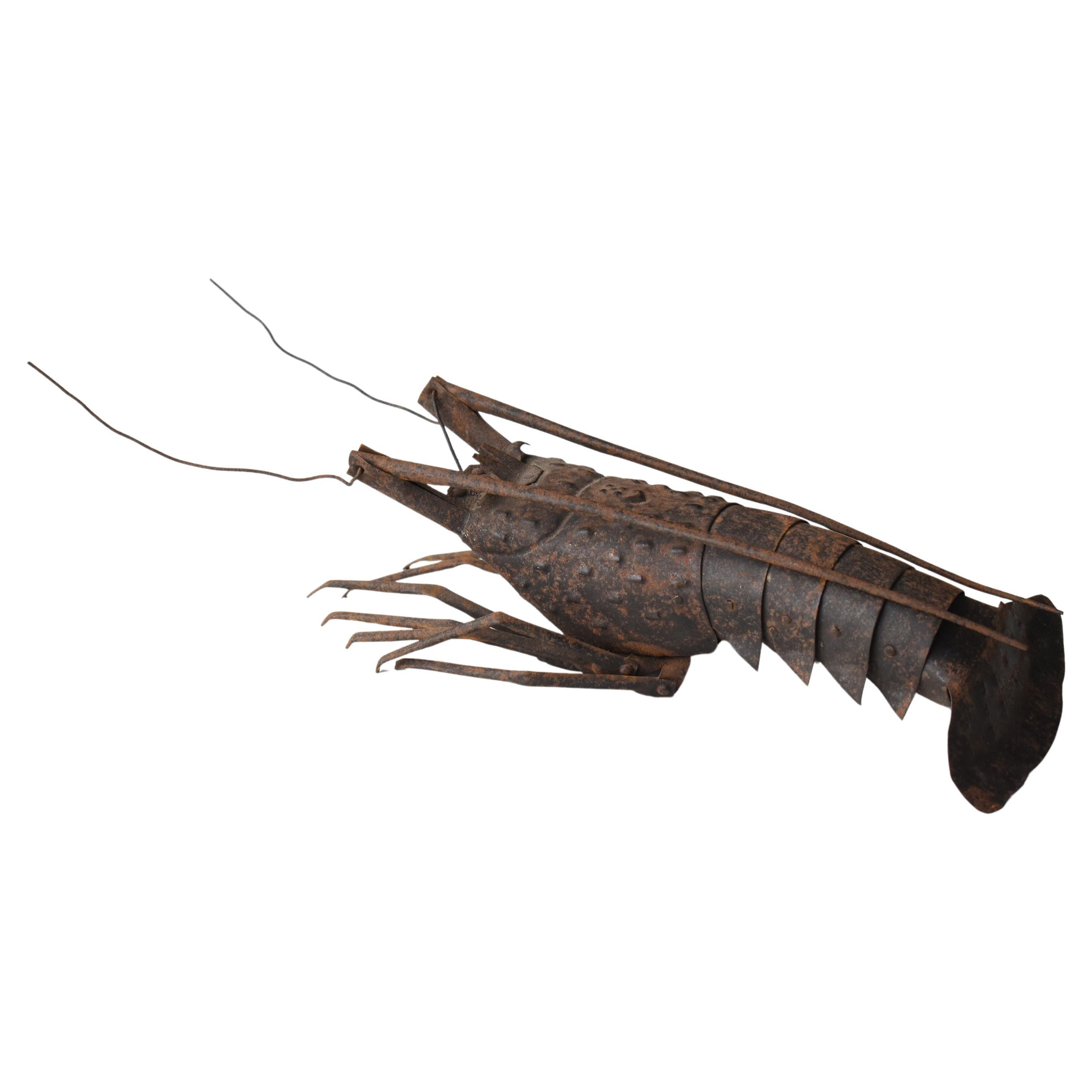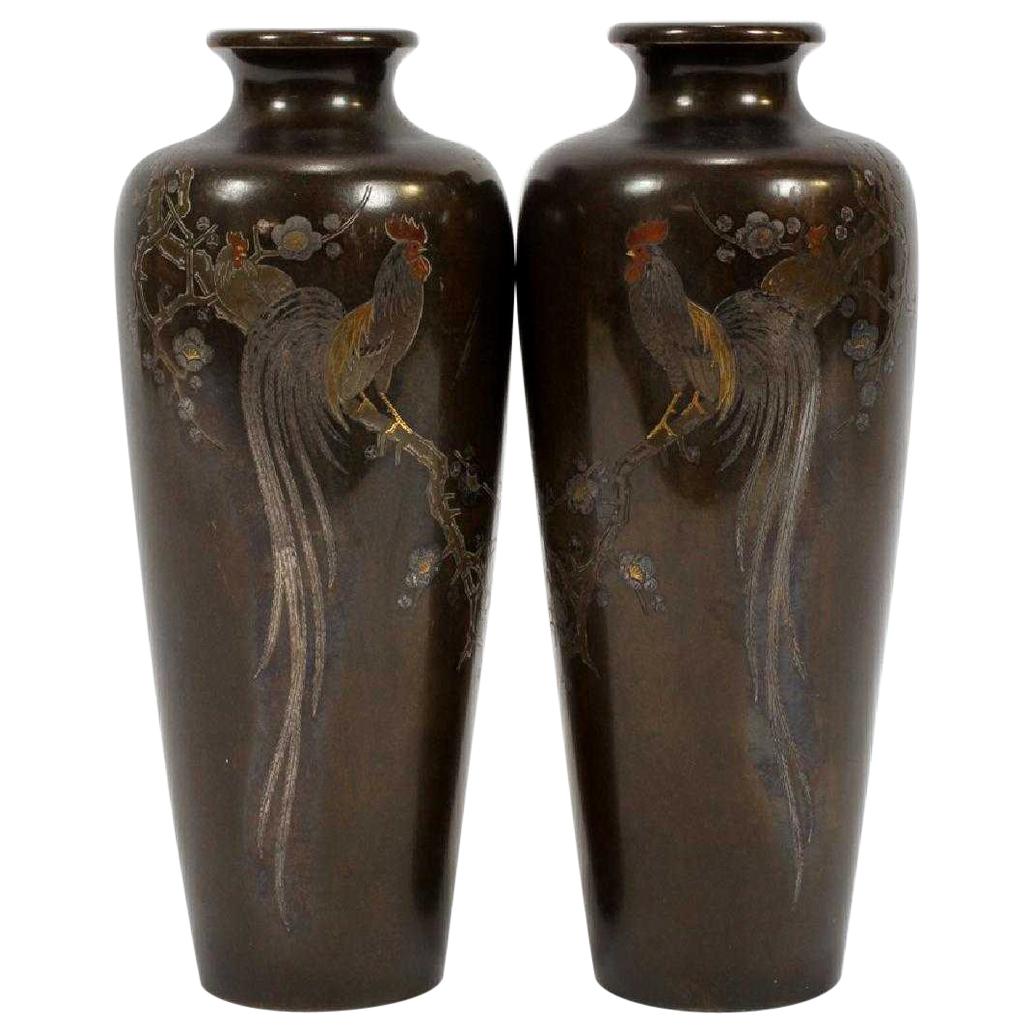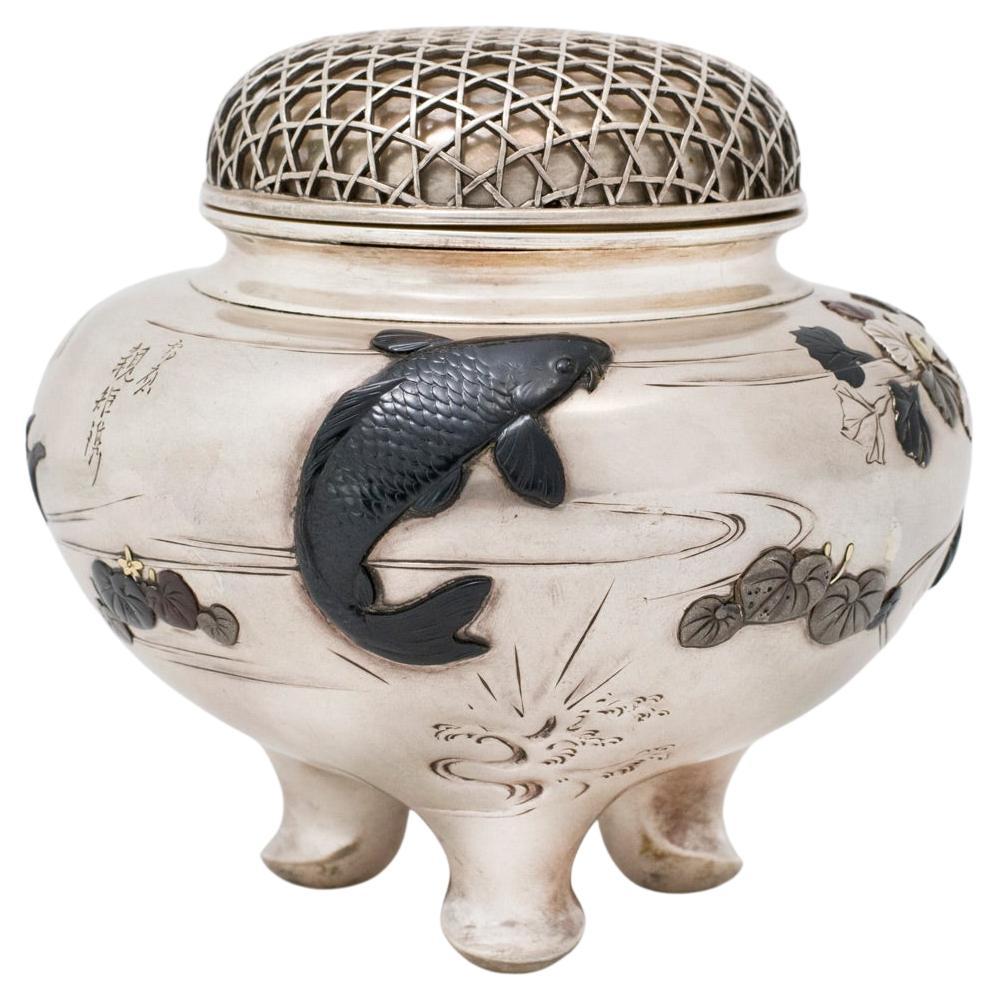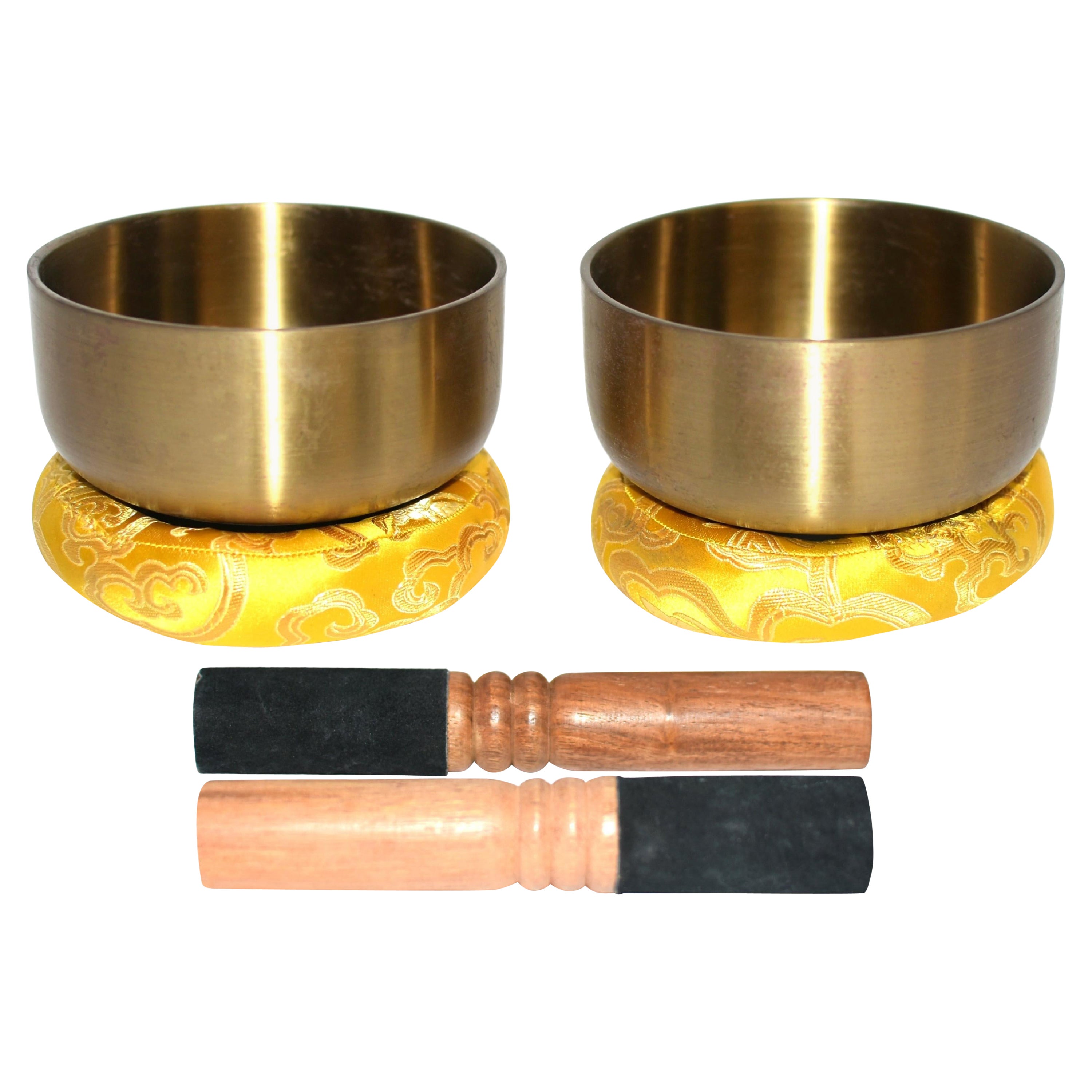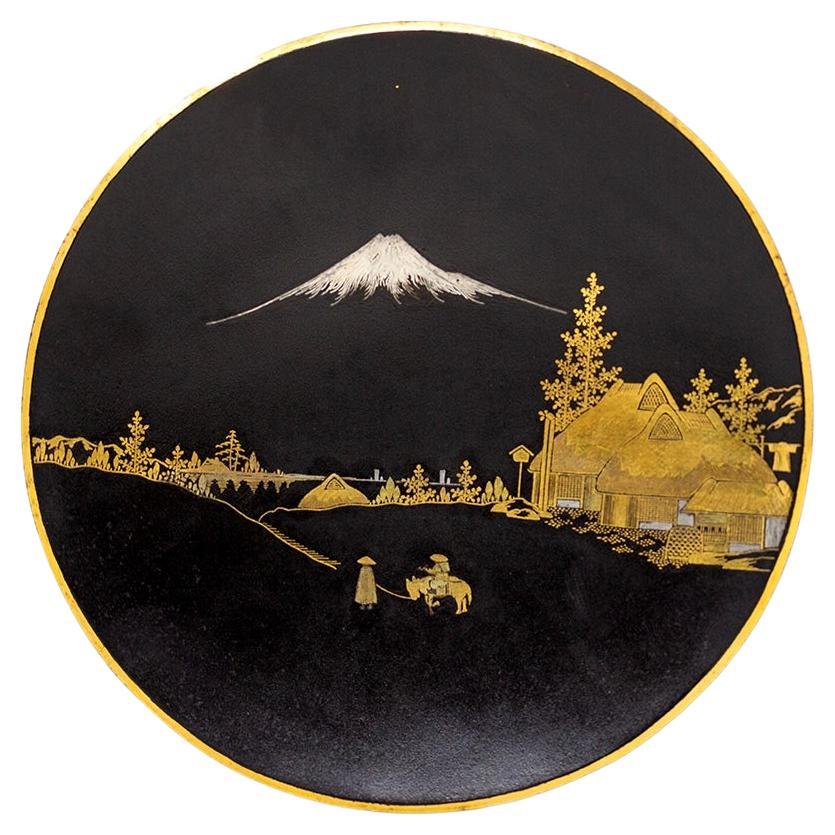Items Similar to Antique Japanese Iron Stirrups with Silver Inlay Signed
Want more images or videos?
Request additional images or videos from the seller
1 of 19
Antique Japanese Iron Stirrups with Silver Inlay Signed
About the Item
A pair of antique Japanese Abumis, stirrup for horse-riding, in cast iron with elaborate silver inlay, circa 16th century Muramachi to Momoyama period. The prototype of Japanese abumi of this "swan" shape became established in Heian period (710-794 AD). This pair features silver very detailed inlay design of vines and grapes among the linear cloud pattern. While grapes were recorded in Japan as early as the 8th century, it wasn't until 16th century that they became widely consumed as well as being used for wine-making under the influence of Portuguese. This particular and uncommon design may correlate with their age. Unlike some ceremonial pieces used by Samurai in later periods Edo and Meiji, the patina and wear on these pair indicate a history of heavy use. There are historical iron patches present inside the soles to cover the holes as well as holes that were left un-repaired. Furthermore, on the stems of both pieces, Kanji inscriptions are found but could not be clearly discerned due to the age and wear. They appear to read as "a certain year and for a certain government bureau". Wonderful historical piece for serious Japanese art collector.
- Dimensions:Height: 9 in (22.86 cm)Width: 11 in (27.94 cm)Depth: 5.5 in (13.97 cm)
- Sold As:Set of 2
- Style:Japonisme (Of the Period)
- Materials and Techniques:
- Place of Origin:
- Period:
- Date of Manufacture:16th Century
- Condition:Wear consistent with age and use. Minor losses. Antique condition as described, heavy patina all through, significant wear on the bottom due to the age and contact, historical repairs evident as well, all as shown.
- Seller Location:Atlanta, GA
- Reference Number:1stDibs: LU945016109011
About the Seller
5.0
Platinum Seller
These expertly vetted sellers are 1stDibs' most experienced sellers and are rated highest by our customers.
Established in 2006
1stDibs seller since 2010
479 sales on 1stDibs
Typical response time: <1 hour
- ShippingRetrieving quote...Ships From: Atlanta, GA
- Return PolicyA return for this item may be initiated within 2 days of delivery.
More From This SellerView All
- Pair of Japanese Bronze Vase with Metal Inlays by MitsufuneLocated in Atlanta, GAA pair of elegant vases of solid oiled bronze from the Meiji era, Japan (1868-1912). In a Classic Meiping shape, the pair has a mirrored inlay with gold, silver and red enamel that d...Category
Antique Late 19th Century Japanese Japonisme Metalwork
MaterialsBronze
- Japanese Cloisonne Vase with Silver Inlays by Ando JubeiBy Ando JubeiLocated in Atlanta, GAA Japanese cloisonne vase by Ando Company circa 1910-30s, end of Meiji to Tasho period. The vase takes an archaic Chinese bronze vessel form know...Category
Vintage 1920s Japanese Meiji Metalwork
MaterialsMetal, Silver
- Pair Korean Iron Box with Silver Inlays Joseon DynastyLocated in Atlanta, GAA fine pair of Korean iron box with intricate silver inlays dated to the late Joseon Dynasty circa 19th century. The matching circular boxes was most likely used to store tobacco lea...Category
Antique 19th Century Korean Other Metalwork
MaterialsSilver, Iron, Bronze
- Fine Korean Iron Tobacco Box with Silver Inlay Joseon DynastyLocated in Atlanta, GAA fine Korean iron box used to store tobacco leaves dated to the late Joseon Dynasty circa 19th century. The box is made from iron and has a heavy weight, although the wears along the edges of the lid and base exposes a bronze metal color underneath, indicating the iron metal may contains a high level of copper. The surface was beautifully decorated with elaborate silver inlay that covers the entire surface except the base. The extraordinary workmanship depicts a pair of deer within the circled square (shape of heaven and earth) and a lined background on the long sides and a crane with spread wings on the shorter sides. Both animals were associated with longevity. Their eyes were highlighted with copper inlay, adding a lively touch to the animation. The lid is centered with a Chinese character "Xi" (Paired-Hui in Korean), which means double happiness. (In Chinese culture, it is often used in a wedding ceremony). The large symbol was set on geometrical background of tightly scrolling diamond pattern surrounded by stylized Ruyi mushroom heads, another floral longevity symbol. Archaic fret cloud band borders the entire perimeters of the lid and the container. Tobacco was introduced to Korean in the first half of the 17th century and gradually gained popularity. When the tobacco was started being smoked in shredded form instead of rolled leaves, there rose the production of the smoking accessories, with some in fine quality as luxury items for the elite. The accoutrement such as this box is a fine example made in late Joseon dynasty, using extensive silver inlay, a technique called "jjoeum-ipsa", in which the silver wires were hammered into the scorched iron surface to create the elaborate design. Similar boxes with variation of shape and motifs are in the collection of several major museums. Compare the box with item Gu 754 in the National Museum of Korea; item 22.78 in MET NYC and M.240:1, 2-1926 in V& A Museum in London. The most closely related example we found is item C232 in the collection of the Museum of East Asian Art...Category
Antique 19th Century Korean Other Metalwork
MaterialsSilver, Copper, Iron
- Pair of Large Chinese Cloisonné Plique-à-Jour BowlsLocated in Atlanta, GAA large pair of Chinese cloisonné enamel bowl made with the technique of plique-à-jour (means "letting in daylight" in French), a challenging method similar to small scale stained windows...Category
20th Century Chinese Chinoiserie Metalwork
MaterialsCopper, Enamel
- Pair of Rare Antique Japanese Folding Screens with ProvenanceLocated in Atlanta, GAAn amazing pair of matching antique Japanese folding screen predating 1812-1813, most likely from Kano School. Six panels each depict C...Category
Antique 1810s Japanese Japonisme Paintings and Screens
MaterialsBrass
You May Also Like
- Pair of Japanese Edo Period Iron Silver Inlaid Red Lacquered Stirrups 'Abumi'Located in New York, NYA Pair of Japanese Edo Period (1603–1867) iron, silver inlaid, and red lacquered stirrups (Abumi). Each of typical form, made of iron with silver inlay on the front with floral bloss...Category
Antique 1690s Japanese Edo Metalwork
MaterialsIron, Silver
- Japanese Silver and Mixed Metal Koro, Artist SignedLocated in Christchurch, GBAs part of our Japanese works of art collection we are delighted to offer this super quality Meiji Period 1868-1912, pure silver and mixed metal koro or incense burner, the heavy sil...Category
Antique 19th Century Japanese Meiji Metalwork
MaterialsMetal, Silver
- Japanese Old Iron Shrimp Figurine 1860s-1920s/Antique Object mingeiLocated in Sammu-shi, ChibaIt is a figurine of Japanese old iron shrimp. It is an item from the Meiji era (1860s-1920s). It is exactly Japanese craftsmanship. Every detail is elaborately made. This is a very ...Category
Early 20th Century Japanese Meiji Metalwork
MaterialsIron
- Japanese Singing Bowl Solid Brass Signed Song BirdLocated in Somis, CAA pair of rare, 20th century, solid golden brass Japanese singing bowls of D6 tone. The upright design and plain surface reflect modern sophistication while the crisp tone conjures up the feeling of joy. A beautiful, single character of the word "Song Bird" was engraved in one of the bowls, expressing the maker's intention. A fantastic ceremonial piece, it is also an amazing instrument for meditation and therapy in achieving personal wellness. Two brocade cushions...Category
20th Century Japanese Metalwork
MaterialsBrass
- Japanese Komai Style Iron Damascene Dish by Abe ShotenLocated in Newark, EnglandJapanese Komai style iron damascene dish. The dish decorated with a landscape scene worked in gold and silver nunomezogan on a matt black ground with a ...Category
Antique Late 19th Century Japanese Meiji Metalwork
MaterialsMetal, Gold, Silver, Iron
- Antique Large Japanese Bronze Champleve Enamel VaseLocated in Wisbech, CambridgeshireAntique large quality Japanese bronze Champleve enamel vase C1900. Would look amazing in the right location. Rare large size and design. O...Category
Antique Early 1900s Japanese Metalwork
MaterialsBronze
